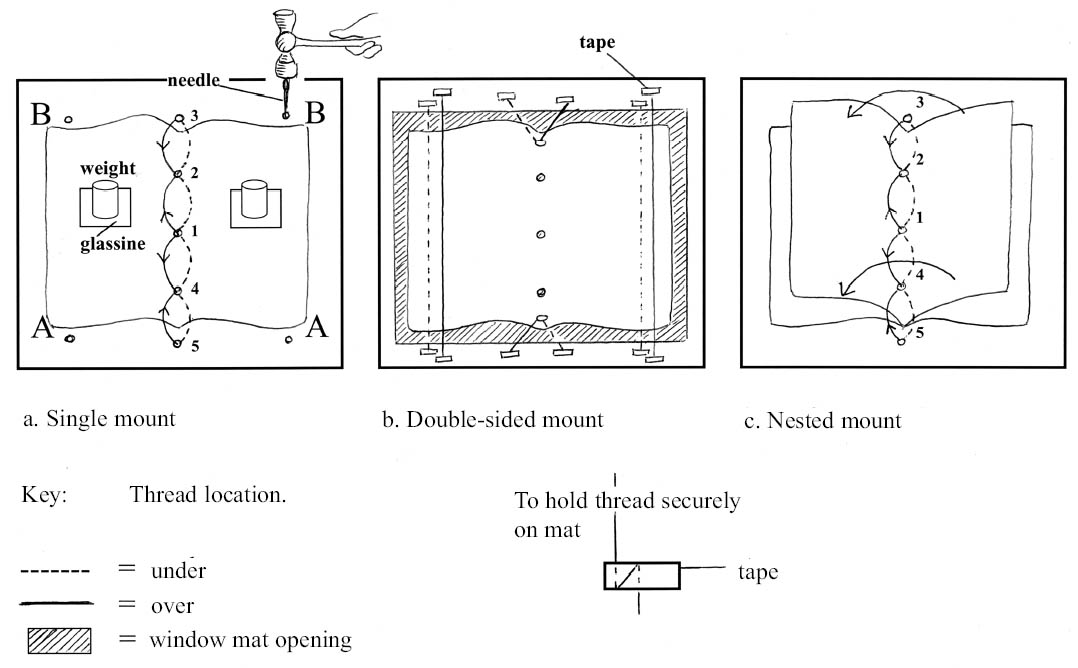A METHOD OF MOUNTING PARCHMENT USING HAIR SILKMARGARET LAWSON
3 HAIR SILK (SILK THREAD)Commonly known to textile conservators, hair silk is a very fine proteinaceous filament obtained from cocoons of silkworms. Hair silk is sold in a skein (fig. 2). To prevent tangles and numerous short ends over time, the skein keeps better if it is cut in one place and made into a long braid from which one strand can be easily pulled at a time (fig. 3). Cutting to create the braid might be problematic only if very long threads were required for a project. To test the suitability of hair silk as a mounting material, a mock-up of the inner frame package for a single bifolio was created. A piece of repair parchment, as similar to the manuscript vellum as it was possible to find, was mounted with hair silk in a double step mat. This mat was placed on top of a piece of conditioned Art-Sorb silica gel sheet material, a moisture-sensitive silica material composed of amorphous silica blended with small amounts of hygroscopic salts from Fuji Silysia Chemical, with
This mock-up was wrapped in bubble wrap and shipped in a Federal Express box to the J. Paul Getty Museum. It arrived safely. After consultation, the Getty staff returned it in the same manner. As an additional test, the box with the mock-up was intentionally dropped a few times. No changes were noted upon opening the unit on return. The framing system described above does not relate to the double-sided mounts, as these mounts were designed for installation on-site. Hair silk proved to be visually acceptable. It was almost invisible, soft enough so that it would not abrade design materials or cut the vellum, and strong enough to support the objects in presentation. |
